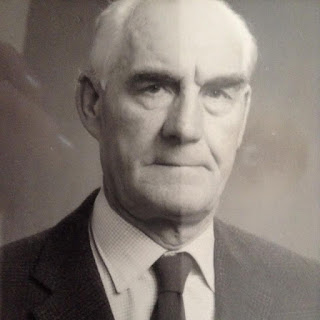I was born in 1962, just seventeen years after the end of World War Two. That was barely a generation away and was indeed still in the memories of my grandparent's generation.
My paternal Grandfather, Donald, was a Shepherd and Farmworker and was considered a preserved status for conscription, although I do believe that he was in the local Home Guard (he didn't appear in Dad's Army).
My maternal Grandfather, Les, was a T/Sgt Churchill Tank Commander during the battle for Normandy. He didn't talk much about the war; after reading about it, I can understand why. But there were two incidents that he did very occasionally.
It is worth writing about Grandfather's background and the Churchill tank to understand what happened then.
Grandfather was a Yorkshireman and was married to Beatrice Mary (my Grandmother). By the time of conscription, they had a family of two daughters: Cicely, my mother, was born in late 1940, followed a couple of years later by Sister Lois. Like many South Yorkshiremen, Grandfather had gone 'down the pit' in their younger days. He had been a policeman in his time, too. I'm a bit vague on the dates; I have a family history, but it is currently in the loft.
The Churchill Tank was hailed as a saviour at the battle of Normandy, but it had a difficult start to its operational life in the rest of the campaign. It was heavily involved in the ill-fated Dieppe Raid. Although it had been designed with conditions similar to World War One in mind, the shingle beach and overwhelming firepower of the Germans at Dieppe led to a less successful operation outcome.
The Churchill was a Medium/Heavy Infantry Tank. Nearly six thousand were produced for the war effort. Their primary purpose was to support infantry advances. Initially hampered by being fitted with a two-pound gun, but later variants, Mk 3's and 4's, were improved with a six-pound gun. Other variants, named Crocodiles, were equipped with flame throwers and towed a tanker of thickened gasoline for the flame thrower. The Germans feared these.
Grandfather's regiment/battalion landed on D-Day plus three and was pitched straight into the battle. By the end of the battle in August 1944, Grandfather's battalion was decimated to the extent that it was amalgamated with another.
My Grandfather told the story of being in a field when a German Tiger Tank came down the road, passing the gateway into the field. If you were unaware, Normandy, covered by the brocade, similar to the Devon Banks we see here, could have been better tank terrain.
Grandfather continued by pulling his tank out onto the road behind the Tiger, knowing that things would not end well if the Tiger turned on them. They had one shot, quite literally.
An aimed shot from Churchill's main gun hit the Tiger on the joint between the turret and the hull, removing the turret cleanly.
This story impressed me as a young man. Years later, I was reading a book about the Churchill Tank in the same battle, and it was written that there was an account that was precisely what my Grandfather told me. It was the only recorded action where a Churchill disabled a Tiger Tank. Coincidence?
The other tale Grandfather used to tell was when we were watching the film A Bridge Too Far about General Montgomery's Operation Market Garden. In the movie, there is a scene where an aeroplane flies over trains full of tanks. By now, Grandfather was part of 30 Corps and was due to battle down towards Arnhem to relieve the Airborne Forces. Strangely enough, I watched that film again this week.
I was lucky to have a Grandfather who had served during the war. There were many whose Grandfathers never made it back.
The current war in Ukraine serves to remind us of these dark hours in Europe. These are troubled times; let's trust we can keep the lid on another Europe-wide conflict.
I was spurred to write this after a Facebook post by a friend who is taking a trip in a Tiger Tank at Bovington.




